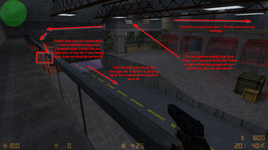Nathan Wailes - Blog - GitHub - LinkedIn - Patreon - Reddit - Stack Overflow - Twitter - YouTube
Misc. Activities Analogous to Investing
A list of business simulation games:
http://en.wikipedia.org/wiki/Chronology ... ideo_games
Earthquake Forecasting
http://en.wikipedia.org/wiki/Earthquake_prediction
Earthquake Prediction: An Overview (2003)
http://www.gps.caltech.edu/uploads/File ... Kees03.pdf
The valuation of athletes
Moneyball is a fantastic book and makes it very easy to see how the valuation of athletes is analogous to investing in companies.
Other Species' Group Behavior
Drug Use
the high and crash may be analogous to how countries do well from taking on debt, but have a tough time quitting. Our brains are like countries w/ different constituencies struggling for control.
Waiting in Line at Whole Foods
People in line at Whole Foods use the physical length of the line as a heuristic when choosing a line. But if there are more subtle factors that affect the speed of one line over another, it could very well be the case that a physically longer line is in fact the faster line.
For example:
1. baby-strollers and full-size grocery carts both take up the space of an additional person
2. if two people are together they'll take up more space
3. at the P St. Whole Foods, people pile into the individual-counter lines when the multiple-counter line gets very long (100 feet), but they often overestimate the amount of time it would take to get to the front of the multiple-counter line. The correct way to figure it out is to divide the number of counters servicing the multiple-counter line by the number of people in the line.
Counter-Strike
How the game works: http://en.wikipedia.org/wiki/Counter-Strike
1v1 on cs_assault - An example of using people's predictable behavior against them
Abstractly-stated summary: I was able to win because I 1) had been monitoring my environment for information about the activity of my opponents, 2) had an in-depth understanding of the features of the environment I was in and the implications of my particular location within that environment, 3) had an in-depth understanding of what would be necessary for me to achieve my goal, 4) understood the many different courses of action available to me, 5) understood how my opponent would behave in a variety of different situations. [the purpose of stating things abstractly is to make it easier for me to see how I can apply the aspects of this experience to investing]
Slightly more in-depth: I took advantage of several pieces of knowledge to trick an opposing player into moving into a position from which I could safely eliminate him. The information I took advantage of included that 1) my opponent was nearby, 2) he didn't know where I was, 3) he didn't know that I knew where he was, 4) having the hostages follow me would play a sound that could be heard from where my opponent was, and 5) my opponent would react to that sound by coming inside and looking toward where the hostages could be found, 6) there was a place I could wait that could be reached quickly from where the hostages were and yet would be in a different direction from where my opponent would be looking.
Longer version: The picture above is from a level called cs_assault; I was playing a game with maybe around 8 CTs (counter-terrorists; SWAT guys) vs. 8 Ts (terrorists). I started outside as a CT. The goal of the CTs was to raid the building and save some hostages on the second floor or just kill all the Ts. Everyone on both teams was dead except for me and one of my opponents. I was inside the building while my opponent was outside (so we were in the reverse of our starting positions). I had very little health left, which meant that I could easily be eliminated if we saw each other at the same time. If you look at the picture above you can see a room in the top center of the picture, on the second floor of the building. In that room is a door to another inner room in which there are some hostages (non-player characters). Because of some quirk with the game, whenever a counter-terrorist asked hostages to follow him for the first time, they would say something like, "OK, let's go", and the sound of them talking can be heard from fairly far away. It was normal (although not routine) in the game for nearby Ts to be alerted by the sound of the hostages being activated by CTs. In the middle of the picture you can see a garage door opening up to the outside; I was inside the building on the second floor and had heard my opponent running around out there, when it occurred to me that I could use the sound of the hostages to lure him inside. I had played this level so many times that I knew that in a situation like this my opponent might be tempted to come inside and come after me, because I would be especially vulnerable when in that outer second-floor room (because I would be confined to a relatively small area but could be attacked from a wide variety of places). But rather than run along the walkway (the top right in this picture) with all the hostages behind me, which was the usual thing that CTs did in that situation when they didn't think Ts were nearby, I instead told the hostages to stay put in the outer room and snuck out in the other direction (the top left part of the walkway in the picture above). I then hopped down onto the red container and then down again to the first floor. When my opponent came sneaking in through the garage door, he was looking up at the second floor room, but I was crouching behind him. I easily eliminated him and won the round.
